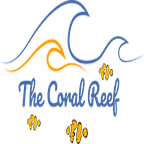All about Anthias

How are we able to deliver exceptionally healthy, vibrantly colored anthias?
Here are the 5 steps we take to move anthias 10 thousand miles from from the indo-pacific to your doorstep and a few fun facts about this species.
1) Net, Not Cyanide
While banned in many countries, low cost “cyanide fishing” is still a common method of harvesting these fish. We test every incoming fish for cyanide exposure and only purchase from net fisherman that live up to our standards.
2) Ammonia, Ammonium and Acclimation
Anthias are exceptionally sensitive to ammonia. Once net caught, the fish travels by boat, truck and plane up to 10,000 miles before arriving at our Tennessee hatchery. Shipping costs are dominated by the cost of shipping the water required for the fish to survive the trip.
Over the years, we have refined the formula for how much water we need for the fish to arrive and thrive. The fish are packed into a box with water with a pH of 8-8.2. During the trip, the anthias continues to excrete ammonia and carbon dioxide. The CO2 causes the pH to drop to less than 6 which in this case is a critical element for survival. As the pH drops below 7.6, toxic ammonia is converted to iinto non-toxic ammonium which is embedded in the tissue, eyes and gill.
The fish survives but when it arrives, the ammonium is a time bomb waiting for a pH of 7.6 or more to reconvert back into ammonia which can burn, possibly kill, but surely compromise its health.
Our acclimation process carefully raises the pH and removes all of the ammonium that is sequestered in the fish during transport.
3) Exceptional Water Quality
After acclimation, we move our anthias into tanks with a pH in the 8-8.2 range. Our water treatment systems ensure that the ammonia levels are well below levels that compromise their health.
4) Smart & Healthy Feeds
Anthias are carnivores, ducking in and out of the water column to feed on a range of smaller organisms such as eggs, larvae and copepods. They eat constantly, but cannot eat fast. Most catchers and exporters do not feed the fish during transport so our anthias arrive starving.
We use .8mm SA Hatchery Diet which mimics the macro and micronutrients profile found in the water column for anthias less than 3" in length. They love it and eat it immediately. For anthias over 3" we use 1.2mm SA Hatchery Diet.
5) Rest & Recovery
After arrival, we nurture our anthias in our hatchery until they are 100% recovered from the stress of being caught, starved, shipped and acclimated.
About Anthias
Anthias are found throughout the Western Indian Ocean, the Red Sea and the Pacific including the Philippines and Japan islands.
This species is sexually dimorphic, meaning the males and females havediffering physical characteristics and color expression.
All anthias are born female and form harems with 5-10 females and a dominate male.
When the dominant male perishes, the largest female of the group will often morph into a male and takes its place.
Anthias are compatible with corals and most all other aquarium animals that cannot eat it but a larger fish such as grouper, eel or lionfish can and will.

